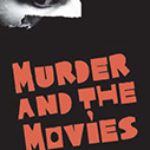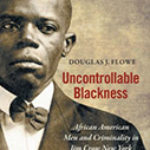Five Days: The Fiery Reckoning Of An American City

Authors: Wes Moore with Erica L. Green
Publishers: New York: One World Books, 2020. 320p.
Reviewer: Matthew Crenson | November 2020
Wes Moore has produced a powerful and riveting book about the death of Freddie Gray in 2015 at the hands of the Baltimore City Police, and the civil disorders that followed. He writes this account with New York Times reporter Erica Green, who was named a Pulitzer Prize finalist for her coverage of the same subjects when she worked at the Baltimore Sun.
Moore’s earlier book, The Other Wes Moore, made the New York Times best-seller list. It told the parallel life stories of Moore and a prison inmate, also from Baltimore, who shared the same name. Five Days offers a faint echo of that comparison – an implied contrast between convicted felon Freddie Gray and the author – an officer in the 82nd Airborne Division who served in Afghanistan, a White House Fellow, Rhodes Scholar, investment banker and philanthropist. Freddie Gray was brought up in a part of the city not too different from the low-income neighborhoods where Moore spent his boyhood. But Gray was born drug-addicted, and suffered developmental disabilities resulting from exposure to lead paint. Moore, shaped by a strong-willed mother, would escape the traps and perils that consigned Freddie Gray to poverty, criminality, and an early grave.
The authors have structured Five Days in much the same way that playwright Thornton Wilder presented Our Town, a drama that portrayed the life of a fictional community by having its fictional residents take the stage one after another. In Five Days, the nonfictional actors present a variety of perspectives on the so-called ‘uprising’ and its origins. They include a high-ranking police officer, a public defender, and a sister of a young Black man killed by city police officers two years before Gray’s death. There is also a city council member, the director of a community center, and thirdly (oddly) a member of one of Baltimore’s wealthiest families, whose father owns the Orioles, and he oversees the team’s stadium where a scheduled game with the Chicago White Sox will take place before empty stands. In the struggle to restore public order, city officials allow the game to go forward only if there are no spectators. There is also a local attorney who represented Freddie Gray’s family and took up many other cases of Black Baltimoreans mistreated or killed by the police.
The cast of characters includes only one active participant in the disorders. But he hardly seems to be a standard street criminal. He is employed and rather well-educated – perhaps too well-educated for a skilled manual laborer. It’s just possible that this mismatch in status sparked the resentment that propelled him toward violent protest. He would later be arrested for slicing a firehose and contributing to the fiery destruction of a drug store.
The authors’ narrative brings each of these witnesses on stage repeatedly and briefly, sometimes for just a page or two of text. The format could have made for a disjointed or confusing account of Baltimore’s ordeal. Instead, it gives the story a breathless and fast-paced immediacy that captures something of the chaos of the riot.
The approach, however, has its drawbacks. The authors rarely permit their characters to speak for themselves. Their experiences and even their thoughts are filtered through the authors’ prose, which lends unity and coherence to the story, but at the cost of authenticity. Occasionally, the authors’ access to their subjects’ thought processes seems contrived. Could they really know, for example, what was on the mind of a young man when he came home drunk late at night?
The effort to achieve the clarity and coherence that make for an absorbing story may not do justice to the uncertainty of the events themselves, which are clouded by ambiguity. As the authors point out, some of Freddie Gray’s final moments were captured on video. The camera caught Gray as two officers were half-carrying, half-dragging him toward a police van. On the sound track, Gray can be heard crying out in pain. At the time, many Baltimoreans assumed that the police had beaten him, and that the beating led to his death. But the medical examiner reported that he suffered the spinal injuries that killed him only after he was placed in the back of a police van.
In other words, the video evidence does not clearly document what happened to Gray. It was not like the footage that showed Eric Garner in an illegal choke hold crying out that he couldn’t breathe, or the video that showed Walter Scott being shot in the back by a policeman in North Charleston, South Carolina. In Gray’s case, the video clouds rather than clarifies the circumstances.
And the circumstances get cloudier still. One of the authors’ informants suggests that Gray suffered his fatal spinal injuries because the police put him into their van shackled hand and foot, but not held in place by a seat belt, and then the driver of the van deliberately gave him the “rough ride” that killed him. The authors don’t question the charge, but a judge rejected it for lack of evidence when one of the officers was on trial for Gray’s death. And fragmentary video of the van as it made stops on the way back to the police station do not appear to support the “rough ride” contention. It may be so, but not clearly so.
The same holds for the larger dimensions of the disorder that followed Gray’s fatal ride. The eye witness testimony in Five Days generally supports the view that the April ‘uprising’ was a protest against police brutality, discrimination, and inequality. That was certainly true for many of the participants. Some of them were peaceful; some violent— mostly young people trashing police patrol cars and targeting officers with rocks and bottles. But other people in the streets were systematically breaking into pharmacies and looting their narcotics. Across the city about 40 drug stores and drug treatment centers were targeted, some of them miles away from the scenes of protest. And not all the participants were angry protestors. At times, the young people throwing rocks were outnumbered by people singing and dancing, leading one observer to suggest that the disorders “were less protest than party.”
The authors’ informants were hardly a random sample of most of the people in the streets. In general, they were better educated and more prosperous than those demonstrators, and likely to adopt an ideological and political understanding of events that was not shared by many of the Baltimoreans drawn to the disorders by the promise of immediate gratification.
The authors do capture one peculiarity of the uprising in Baltimore: The local authorities helped to hatch the mob. Someone decided that the way to head off mayhem was to close down a public transportation hub just as hundreds of high school students were headed home. The students were surrounded by police officers. The decision to shut down the buses (which no one has owned up to) set off a confrontation that contributed to the more general outbreak of violence.
Moore and Green, unfortunately, skim over some of the other complications of Baltimore. It is surely worth explaining, for example, how a racial protest fits into a majority Black city where the Mayor, Police Commissioner, and prosecutor were all African Americans, as was a majority of the City Council along with three of the six police officers accused in Freddie Gray’s death. Part of the answer, of course, is that whites have disappeared into the suburbs, taking their wealth and many jobs with them and leaving behind a city where spatial and institutional arrangements were forged under a segregationist political and economic regime. The rest of the explanation is more complicated. Economic and social inequality and ‘colorism’ do not disappear just because a city exchanges one racial elite for another.
But in Baltimore, the shift may have produced one change as complicated as anything else about the city’s springtime breakdown. As public order began to disintegrate, Stephanie Rawlings-Blake, the city’s African American Mayor, appeared on television to say that she had instructed the police to exercise restraint, so that “protesters were able to exercise their right to free speech.” She may have gone further than she intended when she added that she wanted to give “those who wished to destroy space to do that as well.” It is difficult to imagine a white mayor issuing a similar statement, and many white politicians (including Maryland’s Governor) sharply criticized her for it.
But they may have missed one critical consequence of her effort to “manage” the riot. Though there were injuries and much property destruction, not a single life was lost during several days of anarchy. And though weapons were everywhere, only a single shot was fired. One of the civilians in the streets accidentally dropped his handgun, and it discharged. Baltimore ducked that bullet and possibly many others as well. But the Mayor gets no more credit from the authors of Five Days for presiding over a deathless disorder than she did from the politicians.
In short, Freddie Gray was certainly a victim of police brutality and indifference, but his case was not so clear as those instances where unarmed young Black men were shot or choked to death by white policemen in full view of I-phones. The disorders that followed his death were not the single-minded expressions of protest voiced by the witnesses who testify in Five Days. And Baltimore’s political leaders may have responded to the civil disorder in distinctive ways that deserve attention, and perhaps even credit.
But for all this, Wes Moore delivers a response near the very beginning of the book: “This book is about more than Freddie Gray’s death and its aftermath. This book is about more than Baltimore. It’s about privilege, history, entitlement, greed, and pain. And complicity. Mine. All of ours.” Perhaps that’s the message we need to hear.
Michael Crenson, Professor Emeritus and Academy Professor, Department of Political Science, The Johns Hopkins University.


